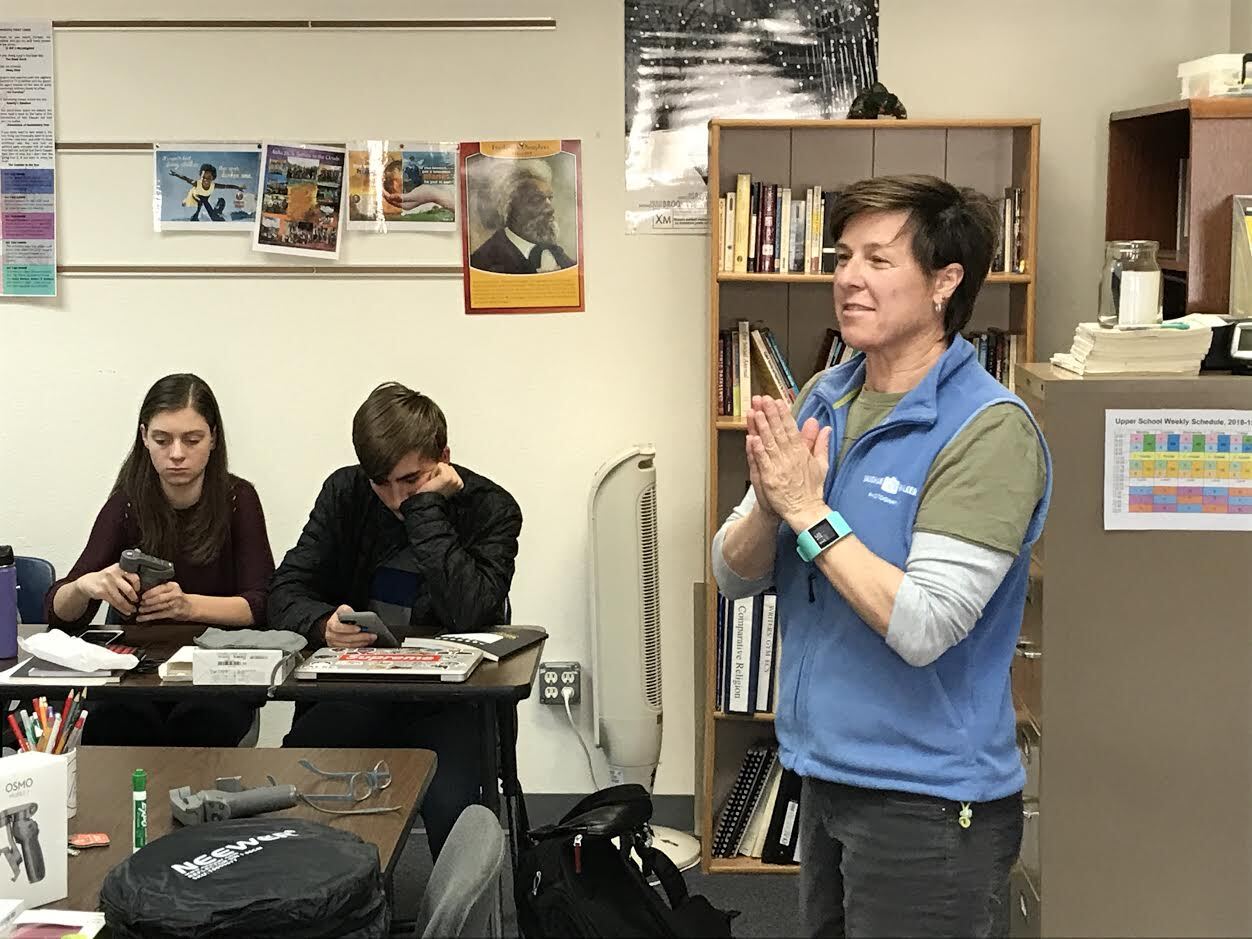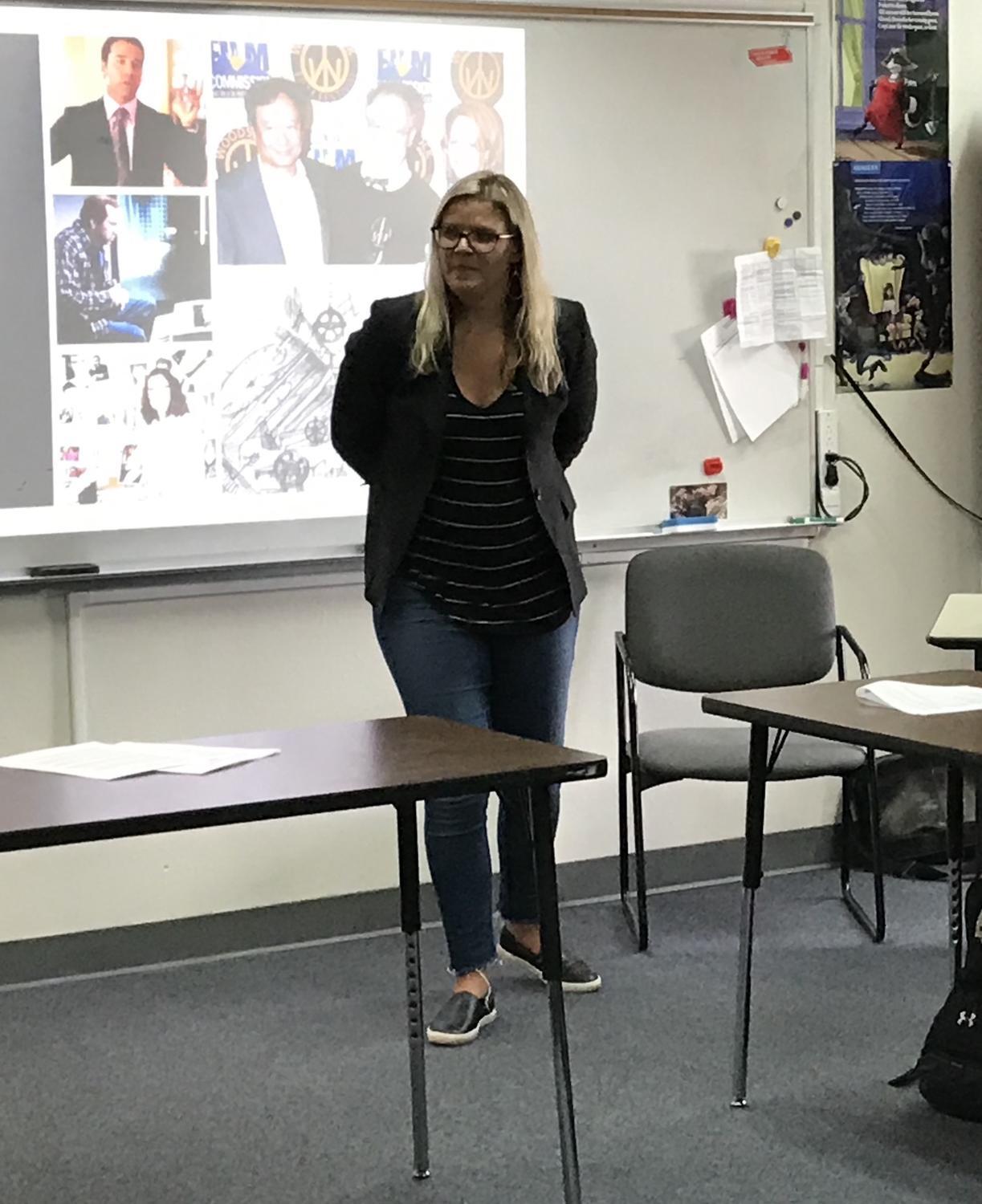March 03, 2020
On Tuesday, students again spent the morning with Taylor Nygaard, a film professor at the University of Denver, studying different types of documentaries and different techniques to use while filming, notably space, lighting, shot selection.
The first technique was the use of space. Space and design can offer different perspectives to film the subjects. Shallow space offers a very up close and personal view of a subject, allowing the audience to see emotion and expression, while deep space gives more background, less of the subject, but a better understanding of the environment that the subject is in.
Taylor then explained different lighting techniques. For example, a “key light” is used to illuminate the subject’s face. The “fill light” lights up the shadows that the key light causes. Lastly, a “back light” is used to give the subject depth. This allows the viewers to see the difference between the subject and the background.
Lastly, Taylor talked to the class about the four main attributes of every shot: framing, depth of field, color, and movement. For example, cinematographers and editors will adjust the color to set different tones and emotion in a scene. A scene with a lot of red ambient light might cause the viewer to think of anger, blood, death, etc. while a scene with blue ambient light might make them think of sadness or sorrow. A zoom might make the subject seem small, if starting out in a large environment, and zooming in to just the subject. A closeup can build intensity with the audience, showing them specific features of a subject’s face. The subjects might also follow a camera to show the sense of the subject’s movement in a scene. Overall it is important to focus on the four main attributes of every shot, to make sure that when filming, each take goes to plan and comes out as planned.
After lunch, the class got the opportunity to explore different techniques and tools used to film. Kelly Walker, a local photographer, came in to teach the class about how to reflect and block light, make the film smooth, and avoid common mistakes made while filming. During the ECS, students will produce their own 5-10 minute documentaries. They were given gimbals to connect to a smartphone to soften and smoothen the video being made. The rest of the afternoon, students went around campus practicing with the gimbals and practicing different techniques to achieve different kinds of shots discussed earlier in the day by Taylor.
All in all, today was a very productive day and the students are excited to pitch their documentary ideas to the class tomorrow for the class to vote on, determining what documentaries will be made.





